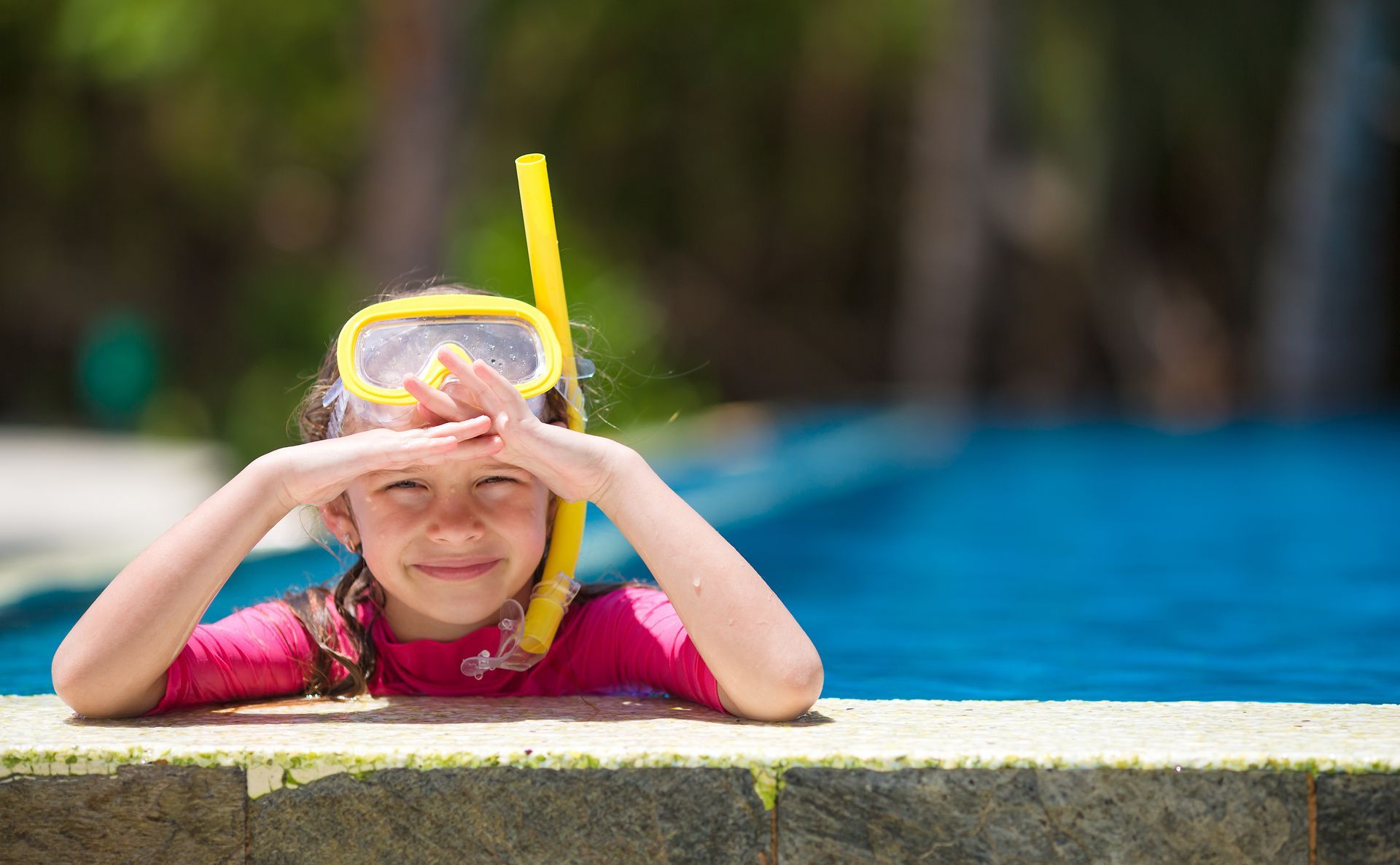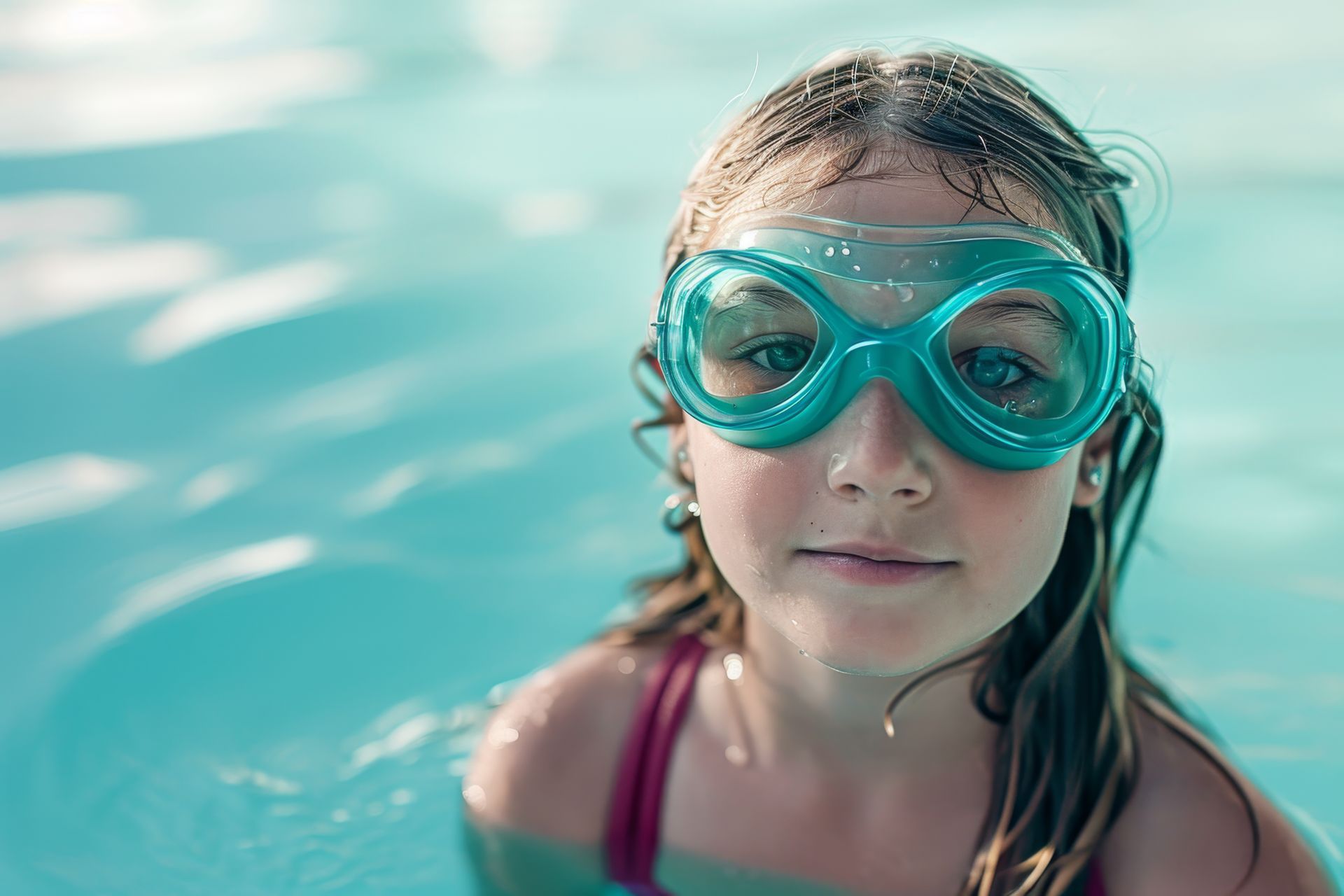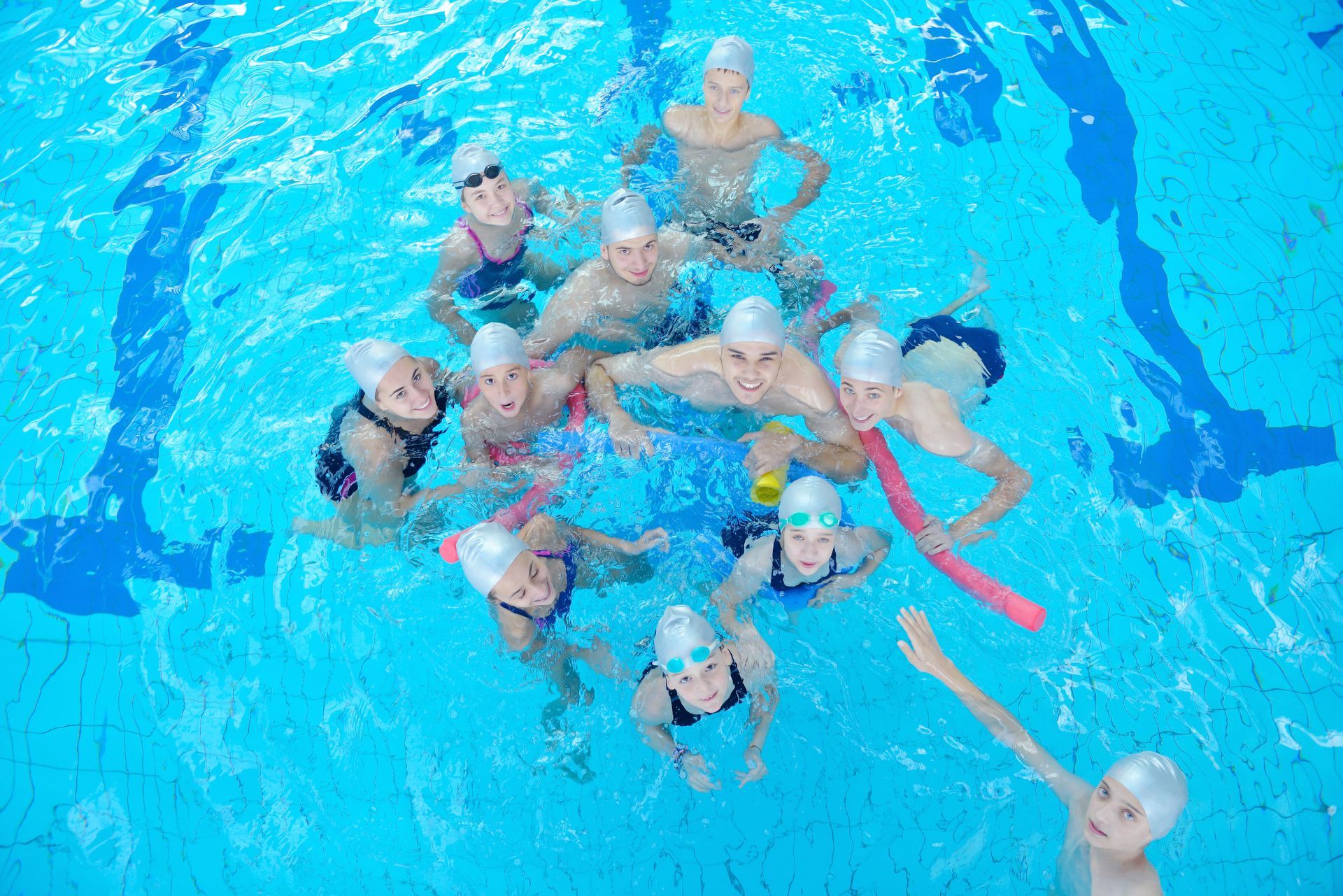Why It’s a Bad Idea to Go Swimming During a Thunderstorm

You’ve probably heard the advice that swimming during a thunderstorm is dangerous. Maybe you’ve wondered just how dangerous it is. Should you listen to that advice? We’ll help you understand the science behind the danger, and why “don’t swim during a thunderstorm” is good advice.
Lightning Bolts Are Powerful. Just how powerful are they?
First, a definition. Lightning is
“a sudden electrostatic discharge that occurs during a thunderstorm.”
It can happen within a cloud, between two clouds, or between a cloud and the ground. This is why lightning seems to travel in every possible direction. There’s a lot of power behind that giant static shock. Let’s illustrate.
Lightning bolts vary in power. On average their current is between 10 million and 100 million volts, with an average amperage of 30,000 amps. The rapid transfer of so much energy has a dramatic effect on the matter around it. The air around a bolt heats to temperatures as high as 54,000 Fahrenheit. That’s hotter than the surface of the sun.
It can be hard to wrap your head around those numbers. They’re so far from our everyday human experience with electricity. So let’s keep it simple and just say that it’s enough power to vaporize solid sand . That’s right, in the millionth of a second it takes for lightning to strike, it turns solid matter into a gas. Practically alchemy.
What Happens When Lightning Hits Water?
When lightning strikes a body of water, what happens is simple. The electric charge doesn’t penetrate far into the water. This is why there aren’t dozens of dead fish popping up after every storm. Instead, it spreads along the surface , discharging horizontally. As for how far it can spread, estimates vary. The power of the bolt itself has an impact on the distance the current can travel, so it’s really hard to tell.
Not that you should be gambling your safety on those numbers, whether they be 20 feet or 20 yards. Even if you’re outside the range of the lethal electric shock, when a bolt strikes water it creates sound up to 260 decibels as far as a mile away. You could lose your hearing instantly at that volume. It’s that dangerous.
So is There Anywhere I Can Swim During a Thunderstorm?
With these facts in mind, it may be apparent why avoiding a lightning strike is a good idea. But is water really that big of a target for lightning? Is lighting attracted to water?
There are three qualities that primarily determine where lightning will strike: isolation, height, and shape. The most dangerous place to be, typically, is an open field. There’s nothing else around to attract the lightning. Being on or in the water is a close second. That wide, flat surface area creates many of the same conditions.
At Sea
Out in the ocean, lightning doesn’t strike very often. Despite its rarity, it’s still very dangerous. Your boat and your body may be the only things sticking up for miles. Salt water is also a better conductor, so the surface electrical discharge spreads farther than across fresh water.
At the Beach
A day at the beach is probably the most dangerous place to be in a thunderstorm. Warm updrafts from the land create the perfect conditions for lightning strikes. You’re still in salt water, and you’re a lot less likely to be scuba diving (which might get you deep enough to be safe). Your head bobbing out of the surf is still the highest point for quite some distance. Very often, a shelter isn’t close.
In Pools
Even pools aren’t safe. While you’re less likely to be directly struck in a pool since there are things around you to draw the strike (especially in an indoor pool), the charge can still reach you while you’re in the water. Metal elements like the pipes and plumbing can conduct electricity.
How Can I Keep Myself Safe?
Staying safe is a matter of staying out of the water during a storm. Lightning can strike as far as 10 miles ahead or behind the rainclouds of a storm. Even if it’s not raining on you, lightning can still strike you.
Your best bet is to designate someone as the lookout. Then use the 30-30 rule: when you see the flash of lightning, count to 30. If you hear the thunder at or before 30 seconds, you’re within 6 miles of the storm, and you’ll want to get out of the water and seek shelter. Every 5 seconds is another mile closer or further away. If you’re only counting to 10 before you hear the thunder, the storm is right on top of you.
Remember, lightning is dangerous. Always take precautions to protect yourself and those that are with you.
Click here for water safety facts.
The post Why It’s a Bad Idea to Go Swimming During a Thunderstorm appeared first on Swim Jim.







